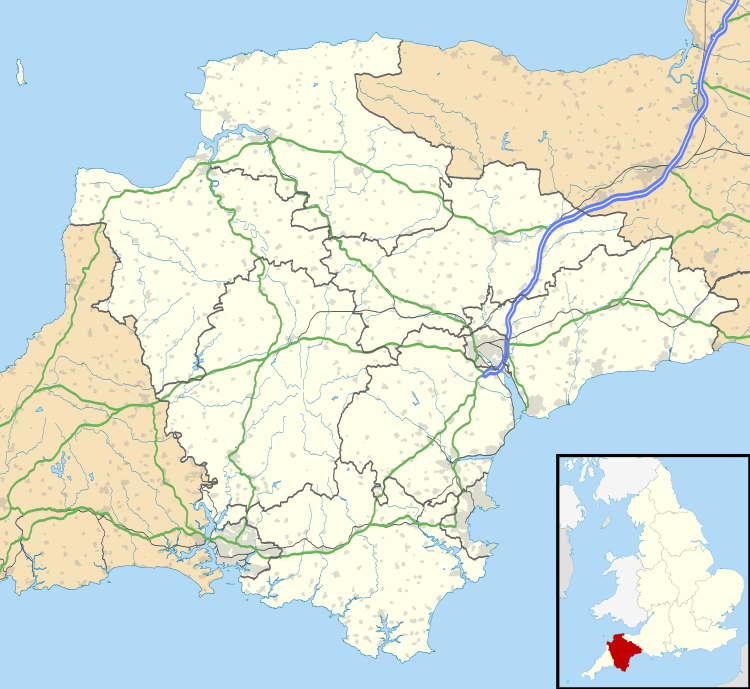Beacon Hill transmitting station
The Beacon Hill transmitting station is an English telecommunications facility located at Beacon Hill, Marldon, Devon. It includes a guyed mast (Beacon Hill A)[1] and a free-standing lattice tower (Beacon Hill B),[2] both of which support various antennas.
History
Beacon Hill A became operational in 1972-3, bringing 625 line PAL colour television to the coverage area of Torbay and south Devon. Beacon Hill B transmits FM radio and DAB radio to the area. In 2007, a third guyed lattice mast was constructed at the site to provide medium wave transmissions for Gold (Exeter/Torbay). The transmitter for Gold was dismantled after the service was discontinued.[3]
Digital switchover
In April 2009, the analogue television transmissions at Beacon Hill A were turned off, requiring homes in the area to switch to the Freeview service.[4] The Beacon Hill transmitter group was the first in the South West of England to stop broadcasting analogue television services. BBC Two ceased at 00:50 on 8 April 2009 and the remaining analogue signals were turned off on 22 April 2009 at 00:20.[5]
Services listed by frequency
Analogue radio
Digital radio
Digital television
|
Before switchover
| Frequency |
UHF |
kW |
Operator |
|---|
| 721.833 MHz |
52- |
2 |
BBC (Mux 1) |
| 738.166 MHz |
54+ |
2 |
BBC (Mux B) |
| 753.833 MHz |
56- |
1 |
Arqiva (Mux C) |
| 770.166 MHz |
58+ |
2 |
SDN (Mux A) |
| 794.166 MHz |
61+ |
2 |
Digital 3&4 (Mux 2) |
| 818.166 MHz |
64+ |
1 |
Arqiva (Mux D) |
|
Analogue television
Analogue television signals ceased in April 2009. BBC Two was closed on 8 April 2009, with ITV1 temporarily moving into its place, followed by the remaining services on 22 April.
References
External links
|
|---|
|
| England | | East | |
|---|
| | East Midlands | |
|---|
| | Greater London | |
|---|
| | North East | |
|---|
| | North West | |
|---|
| | South East | |
|---|
| | South West | |
|---|
| | West Midlands | |
|---|
| | Yorkshire and the Humber | |
|---|
|
|---|
|
| Scotland | |
|---|
|
| Wales | |
|---|
|
| Northern Ireland | |
|---|
|
Italics denotes a transmitter no longer used for transmitting television signals |
